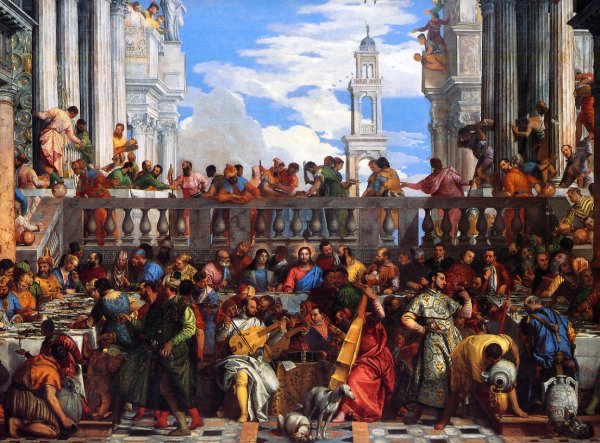
|
|
Paolo Veronese, The Marriage Feast at Cana (Les Noces de Cana), 1563. Le Louvre, Paris |
There it was, The Marriage Feast at Cana, ten meters wide and nearly seven meters tall. He studied the angles of the U-shaped table positioned broadside in an outdoor pavilion with richly dressed figures balanced right and left according to the Renaissance ideal, gesturing, talking, leaning toward one another. And surrounding them--musicians, jesters, servants, even dogs. The end of the meal, the table opulent with goblets, grapes, sugared fruit. The wine having run out, Christ performs his first miracle, turning the water into wine, and it pours out ruby red from the urns. The festiveness, the wealth of ornament, the splendor of the silks in aquamarine, emerald, carmine, yellow ocher were always astonishing to him.
His would use just one angle of tables. He would emulate the close overlapping of figures, several conversations going at once, and the foreshortening, the most difficult perspective to achieve. He would honor Veronese, and he would vie with him--and Watteau and Ingres and Rubens and Fragonard and Vermeer to boot! And he would do it all in two months. He felt hot with the pressure to get started, and to make it the greatest figure painting of the whole Impressionist movement.